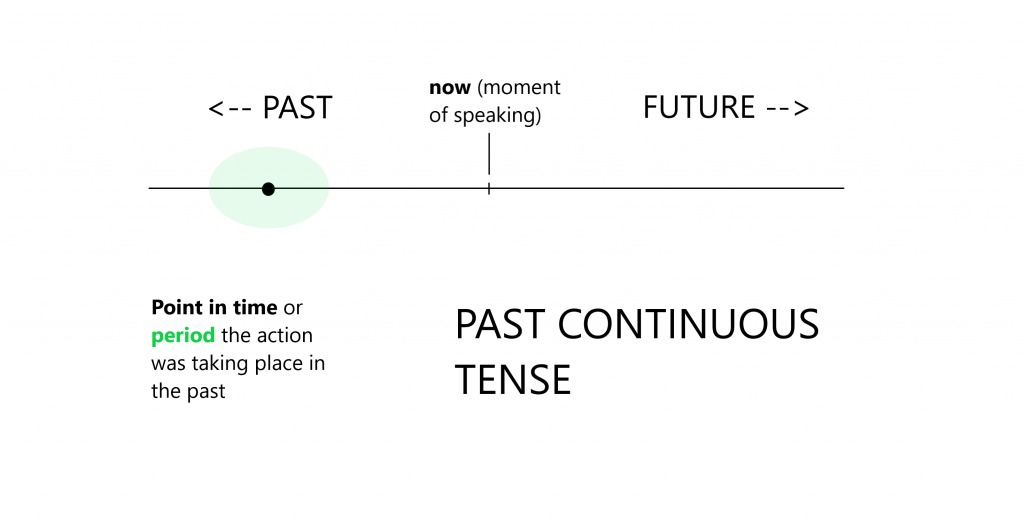Overview of the Past Continuous: the main principle is number 3.
1. Action takes place in the past
2. Action was not complete, i.e. it was continuous
3. Indication of time when action or state was taking place, this indication may be is a point or period in time:
- exact or approximate time on clock
- time defined by context, situation or another action

But I didn’t realize the risks that I was taking at the time.
Let me analyze this sentence. The action was in the past: was taking. Additionally, the action was not complete, i.e. it was unfinished. Compare: unfinished vs finished action, complete vs incomplete action: was taking vs took. Probably, when you translate this sentence into another language, you can feel the difference too. And finally, this action was happening at the time. We understand “the time” from the context.
This is just an introduction, we will expand on that concept a bit more in our next lessons.
I recommend concentrating on the third principle in Past Continuous, as the other two will be learned intuitively.
In conclusion:
As you can notice, Continuous line of tenses uses verbs that express incomplete action. Another term is unfinished action. We also call it ongoing action and, basically, continuous action. A complete action can not be continuous.
Also on Past Continuous:
